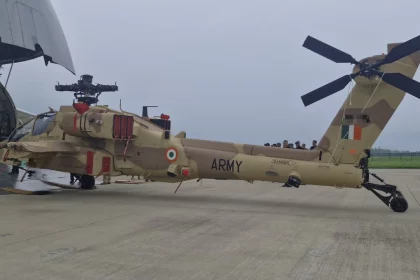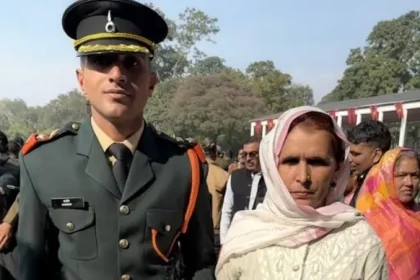Indian Army Receives Final Batch of US-Made Apache AH-64E Attack Helicopters
India Completes Delivery of Six AH-64E Apaches, Bolstering Western Border Attack Aviation Capability.
24-Year-Old Gyaneshwor Singh from Manipur Becomes First Army Officer from His Village, Passes Out from IMA
From Conflict to Commission: Manipur Youth’s Inspiring Journey to the Indian Army.
After Agnipath Ends IAF Dream, Haryana’s Hardeep Gill Becomes Army Lieutenant After 9 SSB Attempts
From Agnipath Setback to IMA Triumph: Haryana Youth’s 9-Attempt Journey to the Indian Army.
Major General Maneesh Kukrety Visits Base Hospital Lucknow, Inaugurates ‘Swasthya Path: Health Trail’
Promoting holistic, patient-centric military healthcare through innovation and compassionate leadership.
Surgeon Vice Admiral Arti Sarin Reviews Preparedness at Army Hospital (R&R)
DGAFMS Lauds Army Hospital (R&R) for Patient-Centric, Digitally Enabled Care and Clinical Excellence.
Vice Admiral Sanjay Bhalla Reviews Training Facilities at INS Vishwakarma
Senior Naval Leader Underscores Modern Training, Infrastructure Upgrades and Personnel Well-Being at Key Technical Establishment.






